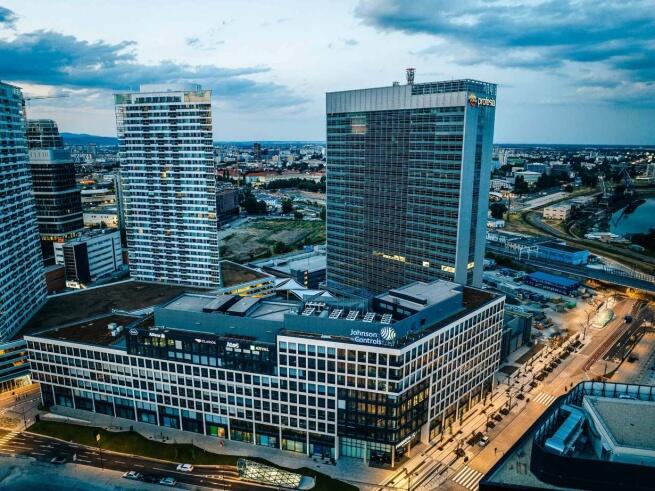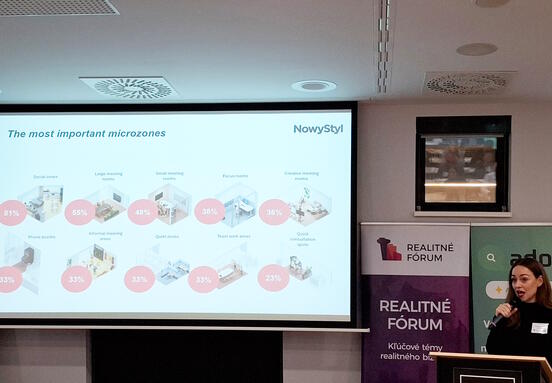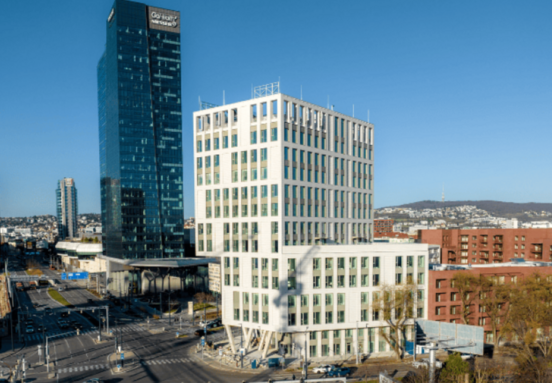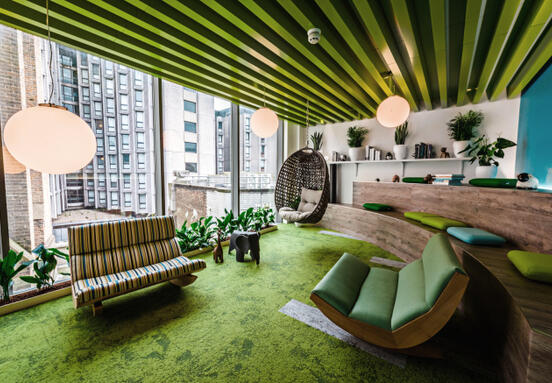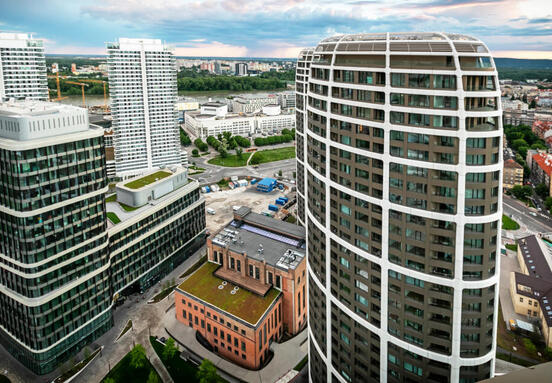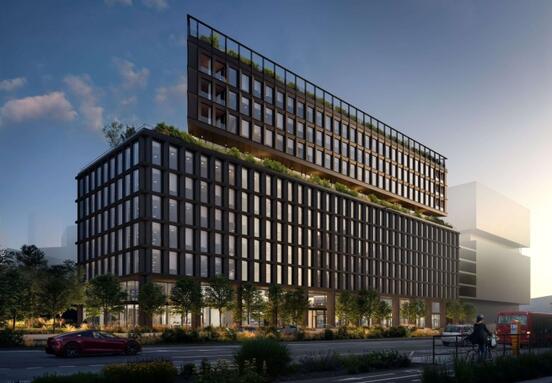THE BATTERY IN THE BUILDING EARNINGS ALSO REDUCES CO2 EMISSIONS
Even administrative buildings that do not have enough roof area to install photovoltaic panels with higher power can save money on electricity consumption and reduce CO2 emissions from operation without additional investments. "The brAIn battery storage, with a capacity designed according to the energy consumption of the building, is controlled by the intelligent software developed by us, which starts charging the battery at a time when the electric grid needs to be taken, and turns off the charging automatically when the grid is overloaded and needs help. The network operator financially rewards the storage for this uncertified support service," says Vladimír Miškovský, Chief Business Officer of Fuergy.
The procurement of battery storage can be realized in two variants: either the entire investment is financed by the owner of the building, or the Energy as a Service (EaaS) model is used, which is also the case with Tower 115, when the entire investment was financed by the company Slovenské elektrárne – energetické služby. "Energy as a service model makes it possible to use modern technologies and achieve savings in energy consumption even if the building owner does not want or cannot finance the entire investment," says Andrea Pancotti, manager of sales and energy services at Slovenské elektrárne - energy services.
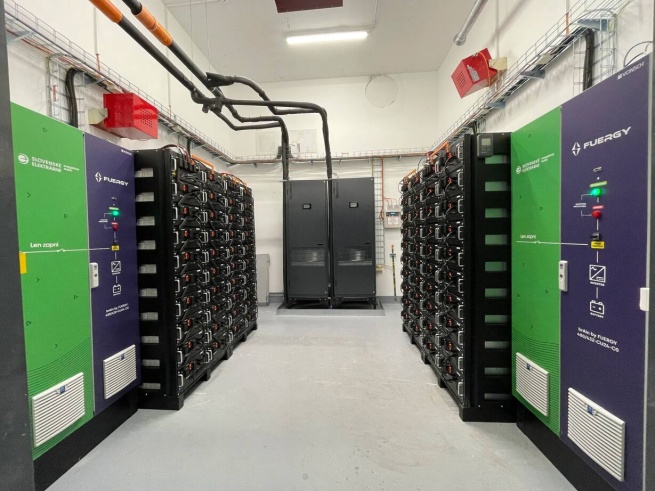
Photo: JTRE
CO2 SAVINGS ACHIEVED 69.99 TONS OF CO2 IN TWO MONTHS (OVER 400 TONS FOR A YEAR OF OPERATION)
As the battery replaces traditional support service providers – resources burning mainly fossil fuels such as oil or natural gas – in balancing the network, it also has a direct ecological benefit. "This is no greenwashing, but a real saving of CO2 thanks to unburnt fossil fuels. From the network operator, we have exact data on how many fossil resources we were able to replace, as well as a certified methodology on how to report real CO2 savings," explains Vladimír Miškovský. During the months of August and September 2023, the battery in Tower 115 saved a total of 69.99 tons of CO2, which translates to over 400 tons of CO2 per year. Since the carbon footprint of battery production is 57 tons, the operation of the storage facility produces net carbon savings in less than two months, which the owner can report in the form of a carbon offset in his ESG report.
"In the 17 years since the fundamental reconstruction, we have continuously modernized the internal equipment in the building in order to keep up with the times. For example, there was a general replacement of lamps with LED ones or a complete replacement of elevators with intelligent ones. The installation of battery storage is another big change that allows us to keep up with much younger buildings," says Marián Židek, JTRE project manager.
A LARGE CAPACITY BATTERY SOLUTION CAN BE USED WITH AN ANNUAL CONSUMPTION OF OVER 1.5 GIGAWATT HOURS
From its opening in 1984 until recently, Tower 115 was one of the three tallest buildings in Slovakia. Today, its 28 floors with an area of 1,390 m2 are filled with offices and meeting rooms, as well as warehouses, shops, restaurants and various types of services. The building was renovated in 2004-2006 and its current annual electricity consumption is 4.7 gigawatt hours. With these parameters, it far exceeds the minimum requirements for battery storage installation. "A solution with large-capacity smart battery storage, i.e. with a capacity of more than 100 kWh, works optimally from a consumption of 1.5 gigawatt hours per year. Buildings with lower energy consumption can either be connected to one common large-capacity battery, or have their own smaller batteries, which we can also connect physically or virtually and then control as a whole," explains V. Miškovský.
The entire modernization process begins with an initial energy audit and assessment of the diagram of electricity consumption, operating technologies and the so-called amount of reserved capacity. However, the possible operation of one's own energy source, for example photovoltaics, is also taken into account. In the case of Tower 115, the result was a storage design with an optimal capacity of 432 kWh. The next step is an inspection of the installation site, which will determine the need for additional structural or electrical modifications. After that, only the installation of batteries and other components at the main substation, which supplies the storage, follows. At Tower 115, the entire modernization process was completed in less than 6 months.
THE BATTERY CAN FUNCTION AS A BACKUP SOURCE
An energy audit can also bring additional savings to the owner of the office building. In practice, it often happens that it reveals incorrectly set fees, for example for unnecessarily high reserved capacity, which increases the fixed monthly fee. Another advantage of incorporating battery storage can be the functionality of a backup source: the building no longer has to have an unecological diesel generator, but it can handle a power outage thanks to the battery. In addition, in case of micro-outages, there will be no power interruption at all, since the storage has a part of the capacity reserved for this purpose and does not provide support services from it. "It is up to the owner of the building whether he wants to use the entire capacity of the battery for paid support services for the network, or reserve a part as a backup source. In that case, however, it is necessary to take into account that the battery will earn less for the owner," explains Vladimír Miškovský.
Battery storage in Tower 115 in a cube
7400 kg of non-flammable batteries (different design compared to electric cars), BMS (battery management system), inverters and other electrical components
700 kg of stretched cables
13 people, 160 hours and 30 kilometers covered during installation
Annual CO2 savings of over 400 tons (equivalent to 19,047 adult trees)
